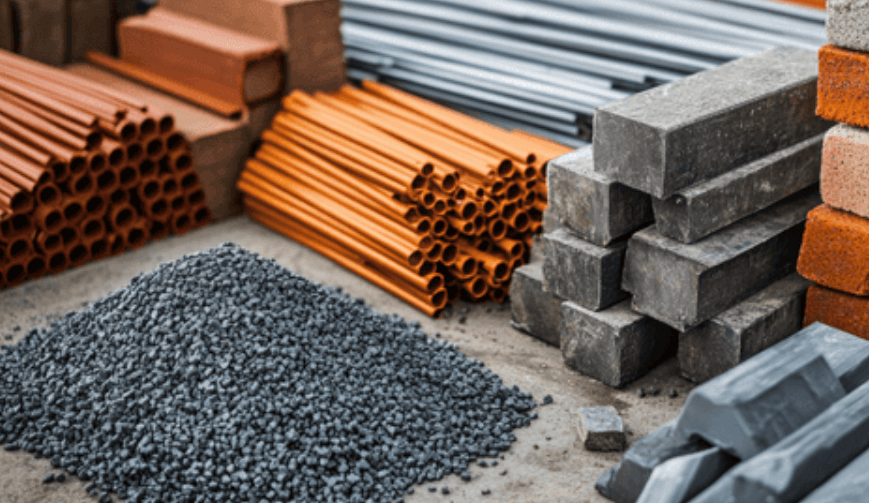
Understanding the Role of Material Density in Construction
Introduction
In modern civil engineering and construction, selecting the right materials plays a critical role in ensuring the durability and stability of structures. One such essential material is geotextile, which has become indispensable in soil stabilization, drainage, and erosion control applications. Among the several parameters that define the performance of geotextiles, the geotextile fabric weight stands out as one of the most important. It determines not only the strength of the fabric but also its suitability for different ground conditions. Understanding this concept helps engineers and contractors make more informed decisions during project planning and execution.
What is Geotextile Fabric Weight
Geotextile fabric weight refers to the mass of the material per unit area, usually expressed in grams per square meter (gsm). This measurement reflects how dense or thick the fabric is. A higher gsm value indicates a heavier and generally stronger fabric, while a lower gsm value represents a lighter and more flexible one. The selection of fabric weight depends on the specific application — whether it’s for filtration, separation, or reinforcement.
See also: Essential Guide to Starting a Business in Hong Kong
Importance of Geotextile Fabric Weight in Construction
The weight of a geotextile fabric influences its performance characteristics. A heavier fabric usually offers higher tensile strength, puncture resistance, and durability. These properties make it ideal for demanding applications like road construction, landfills, and retaining wall stabilization. On the other hand, lighter fabrics are commonly used for filtration and drainage purposes because they allow water to pass through easily while preventing soil erosion.
For instance, a geotextile with a weight of around 100 gsm may be used in landscape projects, while one with 400 gsm or more is preferred for heavy-duty applications such as railway tracks or highways. The right balance of weight ensures optimal performance, cost efficiency, and longevity of the structure.
Factors Affecting Geotextile Fabric Weight
Several factors can influence the overall fabric weight of geotextiles:
- Material Composition: The type of polymer used, such as polypropylene or polyester, affects the density and weight.
- Manufacturing Technique: Woven, non-woven, and knitted fabrics each have distinct weight ranges due to differences in their production processes.
- Thickness and Fiber Density: Thicker fabrics with densely packed fibers tend to have higher gsm values.
- Surface Treatment: Coatings or lamination can add to the overall fabric weight while enhancing durability and UV resistance.
Each of these factors must be carefully considered to match the geotextile with the intended project conditions.
Types of Geotextiles and Their Weight Ranges
Geotextiles can be broadly classified into woven and non-woven types, each available in various weight categories.
Woven Geotextiles
Woven geotextiles are made by interlacing two sets of yarns at right angles, forming a strong and stable structure. They typically range from 150 gsm to 400 gsm. Due to their high tensile strength, they are used for reinforcement and stabilization in roads, embankments, and retaining walls.
Non-Woven Geotextiles
Non-woven geotextiles are produced by geotextile fabric weight bonding fibers together through mechanical, thermal, or chemical means. Their weight can vary from as low as 80 gsm to as high as 800 gsm, depending on the application. Lighter versions are suitable for drainage and filtration, while heavier types serve as protective layers or separators.
Applications Based on Geotextile Fabric Weight
Different project requirements call for specific fabric weights:
- Lightweight (80–150 gsm): Used for erosion control, filtration, and drainage.
- Medium Weight (150–300 gsm): Commonly used in road construction, driveways, and landscaping.
- Heavyweight (300–800 gsm): Applied in high-load projects such as highways, airport runways, and landfill liners.
Choosing the correct weight ensures that the geotextile performs efficiently under stress and environmental conditions.
How to Choose the Right Geotextile Fabric Weight
Selecting the correct fabric weight depends on understanding the site conditions and the function of the geotextile. Engineers typically consider soil type, expected load, water flow, and environmental exposure before finalizing the material. Consulting manufacturer guidelines and testing samples under field conditions can also help ensure proper selection.
For example, in areas prone to heavy rainfall and soil erosion, a medium to heavyweight geotextile provides better filtration and protection. In contrast, a lightweight fabric might suffice for minor landscaping or garden applications.
Testing and Quality Control
Geotextile manufacturers perform several tests to ensure that the fabric meets the required specifications. The weight per square meter is verified through standardized procedures such as ASTM D5261. Other parameters like tensile strength, elongation, and permeability are also tested. Maintaining consistency in fabric weight helps ensure predictable performance on-site and reduces the risk of project failure.
Environmental and Economic Considerations
Heavier geotextiles often cost more due to the additional raw material used, but they offer greater longevity and strength. Lightweight geotextiles, although cheaper, may need replacement sooner if used in heavy-duty applications. Therefore, striking the right balance between performance and cost is crucial. Additionally, modern eco-friendly geotextiles made from recycled materials are available, which can reduce environmental impact without compromising weight or quality.
Conclusion
Understanding geotextile fabric weight is fundamental for selecting the right material in construction and engineering projects. The weight directly impacts the performance, durability, and suitability of the fabric for various applications. Whether used for filtration, separation, or reinforcement, choosing the correct gsm ensures long-lasting results and cost-effectiveness. Engineers and project managers should always evaluate fabric specifications carefully, keeping in mind both technical requirements and environmental sustainability.
By paying attention to parameters like fabric weight, construction professionals can significantly enhance the safety, efficiency, and longevity of their projects.




